The 2019 Jeep Wrangler continues to stand alone as a truly one-of-a-kind vehicle. Its iconic shape and stellar off-road capability haven't wavered through updates and redesigns. Even the all-new, modernized JL Wrangler introduced last year stays true to the Wrangler ethos.
Jeep doesn't cut corners or compromise when it comes to the Wrangler's capabilities, and it continues to be a top choice for off-road enthusiasts everywhere. Even as Jeep continues to make the hardcore Rubicon for folks who want the highest performance possible, the body-on-frame vehicle has gotten more accessible for daily driving duties. We still wouldn't recommend anybody make it their commuter car, but the Wrangler is considerably more refined and easy to live with in 2019 than ever before.
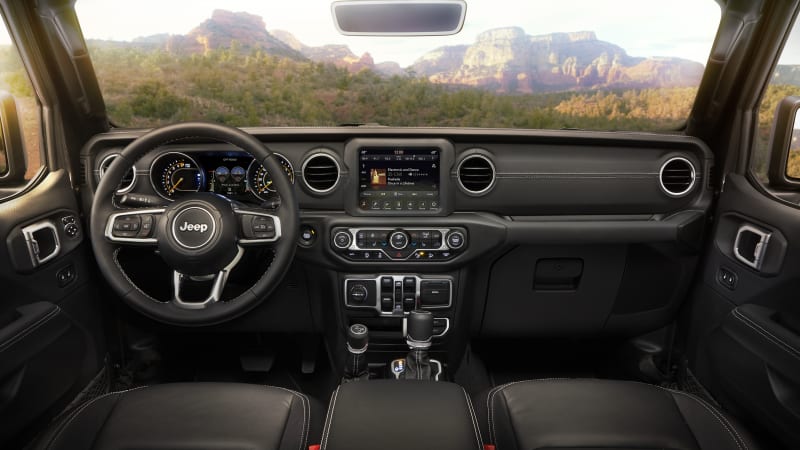
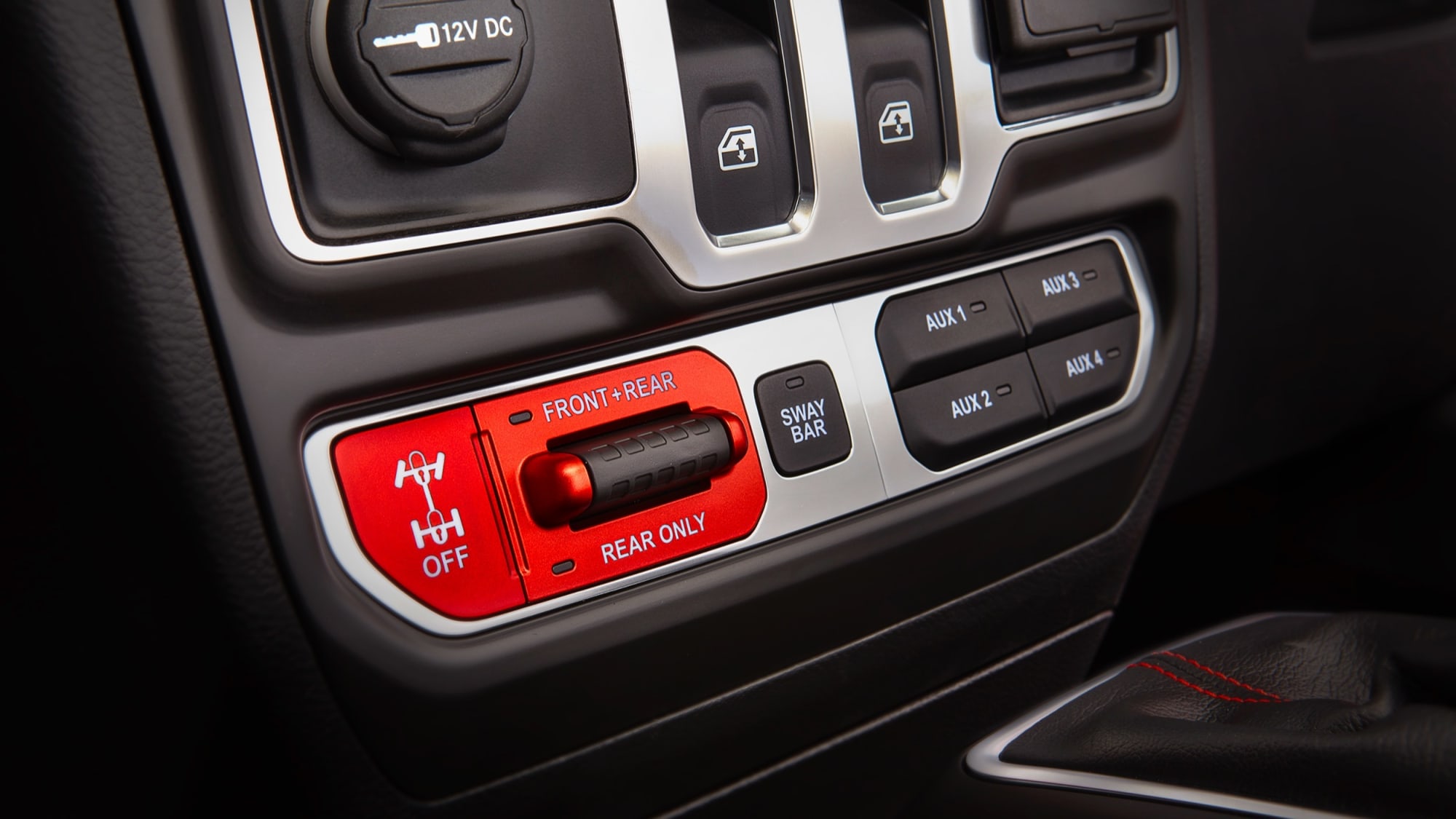
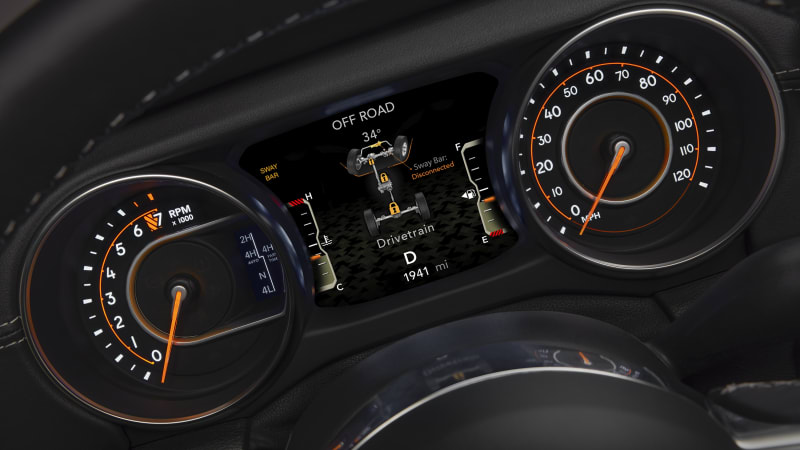
One can opt for as much or as little technology as they want in Wranglers now. The base Wrangler comes with a basic 5-inch touchscreen for barebones audio/car controls. A 7- or 8.4-inch touchscreen can be optioned with FCA's user-friendly Uconnect system for those who want that tech. There's a similar disparity in materials depending on how you option it. A Sahara with all the leather boxes checked can start to feel half luxurious inside, while a base Sport is a plastic and rubber paradise. Regardless of trim, though, the Wrangler's interior is a very different place to be than most cars for sale today (and a great improvement over its predecessors).
A smattering of roof designs are available, but all allow the Wrangler to be a convertible, albeit with varying degrees of difficulty. There's the "Freedom Top" hardtop with removable panels above the driver and front passenger that makes highway cruising a (relatively) quieter affair. Then there are two different grades of soft tops available, which obviously make for a substantially quicker convertible transformation. There's still a steep learning curve with either top, but their operation has been greatly improved for the latest generation. Their new design allows also you to remove the rear side panels without removing the roof and rear window part as well. This provides a convertible's air flow without the sun burn.
Finally, Jeep makes a new Sky One-Touch roof optional, which is a bit of a hybrid. It looks like a hardtop except for the flat portion directly over your head that folds backwards at the press of a button. This lets you get close to the openness of a soft top with its roof removed, but forgoes the complex procedure of physically removing the soft top. This roof is not cheap, as the option will run you an eye-watering $3,995.
Jeep lets you do some things other manufacturers don't with the Wrangler. The big one is that the doors (two or four) can be taken off. Then, if you particularly enjoy the taste of bugs, the windshield can be laid flat on the hood. Remove the roof and you're basically left with a Jeep skeleton. Features like these are just the beginning of why the Wrangler is so well loved by its fanbase.
Interior space for the 2019 Wrangler is respectable, especially if you opt for the 4-door. Rear legroom is compromised in the 2-door at just 35.7 inches, but it's only slightly worse than the 38.3 inches offered in the 4-door. The big annoyance is getting in and out of the 2-door's rear seats — lifting the suspension (as owners often do) makes it even worse. Once you're back there, things are comfortable enough for short trips. However, the upright seating could become problematic for longer ones.
Cargo space for the 2-door is a meager 12.9 cu-ft with the seats up and 46.9 cu-ft with them folded down. The larger 4-door has 31.7 cu-ft of space with the seats up and 72.4 cu-ft when folded down, which is comparable to many two-row mid-size crossovers. We should also note that its boxy design enhances the versatility of the Wrangler's cargo area. Ease of loading depends on your choice of roof (soft top or hardtop). The hardtop opens up the swing door and glass area easily, while the soft top makes loading some items a pain because you'll have to remove part of the soft top to access the whole loading area. It's also possible for fine dust and sand to make their way through the soft top's seals.
Jeep doesn't cut corners or compromise when it comes to the Wrangler's capabilities, and it continues to be a top choice for off-road enthusiasts everywhere. Even as Jeep continues to make the hardcore Rubicon for folks who want the highest performance possible, the body-on-frame vehicle has gotten more accessible for daily driving duties. We still wouldn't recommend anybody make it their commuter car, but the Wrangler is considerably more refined and easy to live with in 2019 than ever before.
What's new for 2019?
The Jeep Wrangler was redesigned for the 2018 model year, so changes for 2019 are minimal. Adaptive cruise control and forward collision warning are now a part of the "Advanced Safety Group" package, and there's a new paint color called "Bikini."


What's the interior and in-car technology like?
The 2019 Jeep Wrangler has a butch interior to match the exterior looks. There's no mistaking it for any other vehicle when you're inside. The exterior paint bleeds through onto the pillars and other parts of the interior. A tall, upright seating position provides a commanding view over the relatively short, narrow hood. You sit close to the windows and windshield that now has a slight rake to it with the redesign. All the controls are easily within reach; you just have to find them first.One can opt for as much or as little technology as they want in Wranglers now. The base Wrangler comes with a basic 5-inch touchscreen for barebones audio/car controls. A 7- or 8.4-inch touchscreen can be optioned with FCA's user-friendly Uconnect system for those who want that tech. There's a similar disparity in materials depending on how you option it. A Sahara with all the leather boxes checked can start to feel half luxurious inside, while a base Sport is a plastic and rubber paradise. Regardless of trim, though, the Wrangler's interior is a very different place to be than most cars for sale today (and a great improvement over its predecessors).
A smattering of roof designs are available, but all allow the Wrangler to be a convertible, albeit with varying degrees of difficulty. There's the "Freedom Top" hardtop with removable panels above the driver and front passenger that makes highway cruising a (relatively) quieter affair. Then there are two different grades of soft tops available, which obviously make for a substantially quicker convertible transformation. There's still a steep learning curve with either top, but their operation has been greatly improved for the latest generation. Their new design allows also you to remove the rear side panels without removing the roof and rear window part as well. This provides a convertible's air flow without the sun burn.
Finally, Jeep makes a new Sky One-Touch roof optional, which is a bit of a hybrid. It looks like a hardtop except for the flat portion directly over your head that folds backwards at the press of a button. This lets you get close to the openness of a soft top with its roof removed, but forgoes the complex procedure of physically removing the soft top. This roof is not cheap, as the option will run you an eye-watering $3,995.
Jeep lets you do some things other manufacturers don't with the Wrangler. The big one is that the doors (two or four) can be taken off. Then, if you particularly enjoy the taste of bugs, the windshield can be laid flat on the hood. Remove the roof and you're basically left with a Jeep skeleton. Features like these are just the beginning of why the Wrangler is so well loved by its fanbase.
How big is it?
Since the Wrangler is offered in two size configurations, it's tough to pin down a class to put it in. On account of the type of vehicle it is and how it drives, the Wrangler is pretty much in a class of its own. The two-door measures 166.8 inches, while the more popular four-door Unlimited is sitting at 188.4 inches in length. Even if we were to try and put the Wrangler in a normal class — compact SUVs, for example — nothing else would be able to match its nearly singular off-road focus.Interior space for the 2019 Wrangler is respectable, especially if you opt for the 4-door. Rear legroom is compromised in the 2-door at just 35.7 inches, but it's only slightly worse than the 38.3 inches offered in the 4-door. The big annoyance is getting in and out of the 2-door's rear seats — lifting the suspension (as owners often do) makes it even worse. Once you're back there, things are comfortable enough for short trips. However, the upright seating could become problematic for longer ones.
Cargo space for the 2-door is a meager 12.9 cu-ft with the seats up and 46.9 cu-ft with them folded down. The larger 4-door has 31.7 cu-ft of space with the seats up and 72.4 cu-ft when folded down, which is comparable to many two-row mid-size crossovers. We should also note that its boxy design enhances the versatility of the Wrangler's cargo area. Ease of loading depends on your choice of roof (soft top or hardtop). The hardtop opens up the swing door and glass area easily, while the soft top makes loading some items a pain because you'll have to remove part of the soft top to access the whole loading area. It's also possible for fine dust and sand to make their way through the soft top's seals.
What's the performance and fuel economy?
The 2019 Jeep Wrangler is currently offered with two powertrain choices. The base 3.6-liter V6 producing 285 horsepower and 260 pound-feet of torque can be paired to either a six-speed manual or an eight-speed automatic transmission. Acceleration is perfectly adequate, and there's very little hunting and pecking as the automatic gearbox picks the proper ratio. There's just enough power to spin the rear tires from a standing start, but the Wrangler is certainly no hot rod. That's especially true of the four-door model, which is saddled with considerably more weight.The six-speed manual is fine, with a reasonable clutch pedal that's not too hard or long to make using it a pain. Far from it. Fuel economy for the manual 2-door is rated at 17 mpg city, 25 mpg highway and 20 mpg combined. The automatic 2-door and 4-door are rated at 18/23/20 mpg. Finally, the 4-door manual gets 17/23/19 mpg.
Optional is a 2.0-liter turbocharged four-cylinder with 48-volt mild-hybrid tech. It produces 270 hp and 295 lb-ft of torque, and is only pairable with the eight-speed auto. Fuel mileage gains are substantial at 22/24/22 mpg (4-door) and 23/25/24 mpg (2-door), but you'll need to run premium fuel to realize those gains. Besides the fuel economy advantage, though, the turbo actually feels quicker than the big V6. The thrust still won't blow you away, but the turbo does represent a performance upgrade.
A 3.0-liter diesel V6 with 260 horsepower and 442 pound-feet is slated to be introduced this year, but we didn't have any details about it at the time of this writing.
What's it like to drive?
On-road, the Wrangler remains a bit of a bear to handle. The steering is slow and wandering. Crosswinds cause it to blow about and stray from its lane on the highway. Bumps and road imperfections are felt throughout your body, and the wind noise is quite tragic at higher speeds with the soft top. The hardtop isn't exactly serene, either, and in general you'll find a Jeep Grand Cherokee or Toyota 4Runner to be exponentially more comfortable and refined.On the other hand, the JL Wrangler is improved in all those areas compared to its predecessors, so one could say the on-road manners are more agreeable than before. This Jeep is definitely better than previous Wranglers for daily driving duty, but we still wouldn't recommend that someone purchase one for that sole purpose.
Off-road is where the Wrangler truly comes alive. The fully boxed ladder frame and five-link coil suspension setup with Dana solid axles that collectively cause so many problems on pavement show their worth when you venture off it. The Wrangler also benefits from standard skid plates, an approach angle of 44 degrees, breakover angle of 27.8 degrees, departure angle of 37 degrees, and ground clearance of 10.9 inches that make it a veritable mountain goat.
Of course, four-wheel drive is standard, and the Wrangler offers a choice of three different transfer case options. The Rubicon has the most intense gear with the Rock-Trac system. This gets you a 4:1 low gear ratio and allows for a 84.2:1 crawl ratio with the manual, or a 77.2:1 with the automatic. The Sport and Sahara get the old Command-Trac system, netting a 2.72:1 low range that allows for a rock-crawling low gear of 48.18:1 with the manual transmission, or 44.2:1 with the automatic.
All this becomes extra fun when you remove the roof, doors and set down the windshield when off-roading. No other off-roader (besides the Wrangler's Gladiator truck brother) will allow you to get that close to the elements, which is a serious plus when driving the Wrangler.
What more can I read about the Jeep Wrangler?
2018 Jeep Wrangler Unlimited JL Sahara Drivers' Notes Review | Fun, multiplied
Our editors take turns in the four-door Wrangler Unlimited, and specifically a loaded Sahara model. We comment about its price (it sure is high), its interior (quite the upgrade) and its performance as a daily driver on-road (it isn't very good at it).
2018 Jeep Wrangler First Drive Review | Improving an Icon
Our first impressions of the current-generation Jeep Wrangler when it was introduced for 2018. We include details about its design and engineering, plus an in-depth look at how it changed from the previous generation.
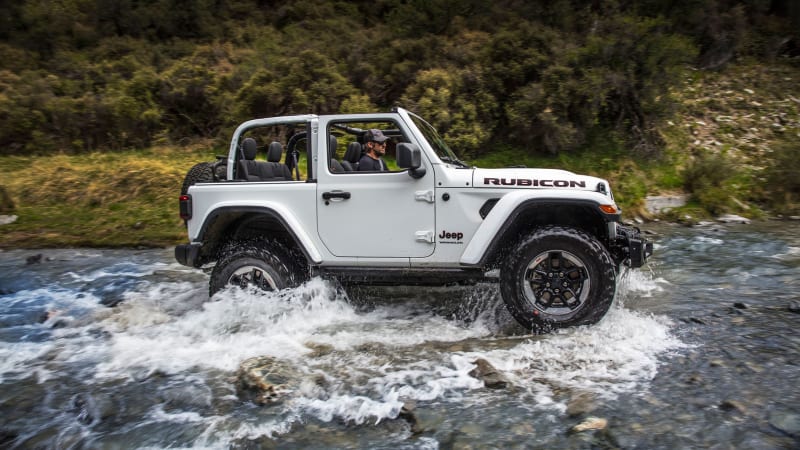
What features are available and what's the price?
A base Wrangler 2-door Sport starts at $29,540 including the $1,495 destination charge. A 4-door Sport brings that price up to $36,040, and an automatic transmission adds $2,000 to either of those vehicles. Opting for the 2.0-liter turbo four-cylinder adds another $1,000 on top of that.Standard equipment on the Wrangler Sport is thin. You get 17-inch steel wheels, a soft top, cloth seats, air conditioning, a 5-inch touchscreen, manual door locks and manual windows. Of course, you can add much more that that. In fact, you can stuff the new Wrangler with genuine luxury equipment as well as accident avoidance tech.
For information on these options plus other trim levels and configurations, you can check out the breakdown of features, specs and local pricing here at Autoblog.
What are its safety equipment and crash ratings?
At the time of this writing, the 2019 Jeep Wrangler had not been fully rated by the NHTSA or IIHS for crash safety.There isn't much to speak of when it comes to active safety tech for the Wrangler, but adaptive cruise control and forward collision warning with automatic braking are at least available on the automatic-equipped Sahara or Rubicon. Blind-spot warning and rear cross-traffic alert are also available as an option.
What competitors should you consider?
2019 Toyota 4RunnerThe 4Runner may not have the same off-road capability as the Wrangler, but it isn't far off, and is more spacious and livable as a daily driver.
2019 Jeep Grand Cherokee
Much like the 4Runner, the Grand Cherokee trades capability for space and livability, but adds considerably more refinement and luxury than both.
2019 Chevrolet Colorado ZR2
It isn't cheap, but then, a Wrangler Rubicon isn't, either. The Colorado ZR2 and its Bison variant are hardcore off-roaders intended for higher-speed adventures.



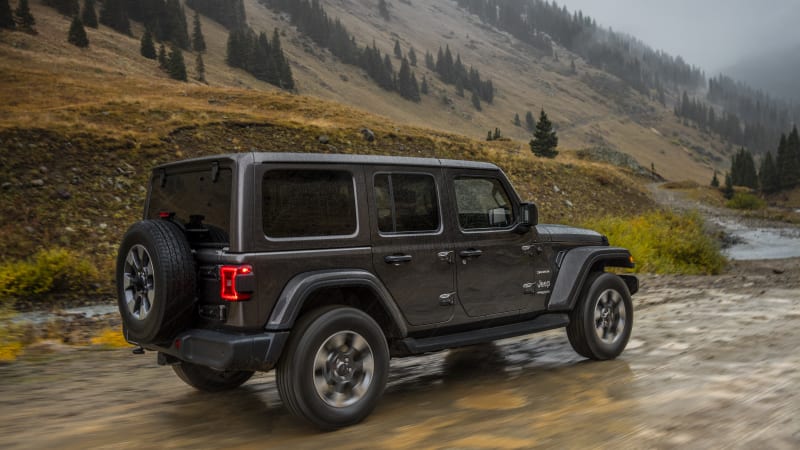









Sign in to post
Please sign in to leave a comment.
Continue